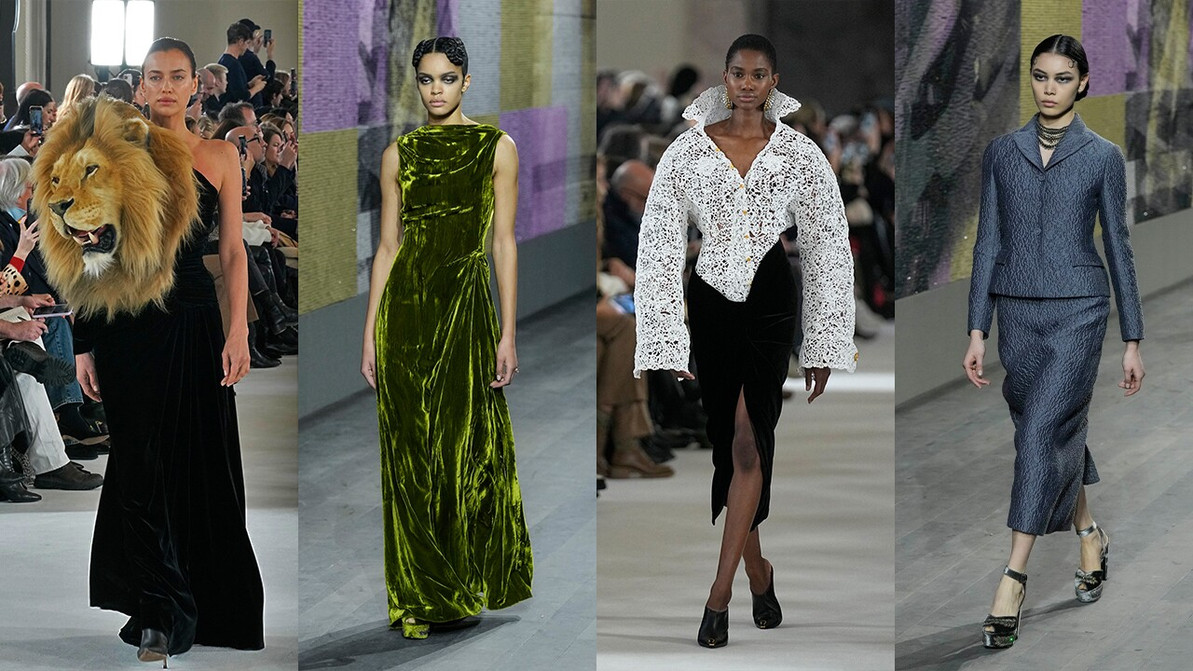Fashion is more than just clothing; it is a dynamic reflection of cultural shifts, historical influences, and the ever-changing tapestry of human expression. “The Evolution of Fashion: A Timeless Tapestry” unravels the threads of style across epochs, showcasing how fashion has woven itself into the fabric of our collective identity.

Ancient Threads: Fashion’s story begins in ancient civilizations, where garments served both functional and symbolic purposes. From the draped robes of the Greeks to the intricate attire of the Egyptians, clothing communicated status, occupation, and cultural values.
Medieval Weaves: The medieval period brought about a dramatic shift in fashion. Elaborate fabrics, intricate embroidery, and structured silhouettes adorned the elite. Fashion became a symbol of social hierarchy, with sumptuary laws dictating who could wear what.
Renaissance Flourish: The Renaissance era marked a revival of art, culture, and fashion. Clothing became a canvas for creativity, showcasing elaborate embellishments, rich fabrics, and voluminous silhouettes. The rise of the tailor and the concept of individual style began to emerge.
18th Century Elegance: The 18th century embraced opulence and refinement. Rococo fashion in Europe featured ornate gowns, powdered wigs, and intricate accessories. Fashion became a marker of sophistication, and trends trickled down from the aristocracy to the burgeoning middle class.
19th Century Transformations: The 19th century witnessed significant shifts in fashion due to industrialization. The Victorian era showcased both extravagance and modesty, while the latter half of the century saw the emergence of ready-to-wear clothing, making fashion more accessible.
Roaring Twenties: The Jazz Age brought about a revolutionary change in fashion. The flapper style of the 1920s rejected Victorian constraints, embracing shorter hemlines, loose silhouettes, and a newfound sense of liberation. It was an era that challenged traditional norms and celebrated individuality.
Golden Age of Hollywood: The glamour of Hollywood in the mid-20th century left an indelible mark on fashion. Iconic stars like Audrey Hepburn and Marilyn Monroe set trends with their elegant yet daring styles, influencing the way people dressed around the world.
Swinging Sixties: The 1960s were a cultural revolution, and fashion echoed the spirit of change. Mod fashion, psychedelic prints, and the rise of youth culture defined this era. Designers like Mary Quant and Pierre Cardin reshaped the landscape with bold, innovative designs.
Punk Rebellion: The punk movement of the 1970s rejected mainstream conventions, giving rise to a DIY aesthetic that disrupted traditional fashion norms. Safety pins, leather jackets, and ripped jeans became symbols of rebellion, reflecting a countercultural spirit.
Global Fusion: The 21st century brought a fusion of global influences. The internet and social media allowed for instant fashion communication, leading to a diverse mix of styles. Sustainable fashion, inclusivity, and a celebration of individuality have become central themes in contemporary fashion.
The Future Stitch: As we step into the future, the evolution of fashion continues. Sustainable practices, digital innovation, and a heightened awareness of social issues are shaping the industry. Fashion remains a mirror reflecting the values, aspirations, and creativity of society—a timeless tapestry that weaves together the threads of our collective identity. ()
